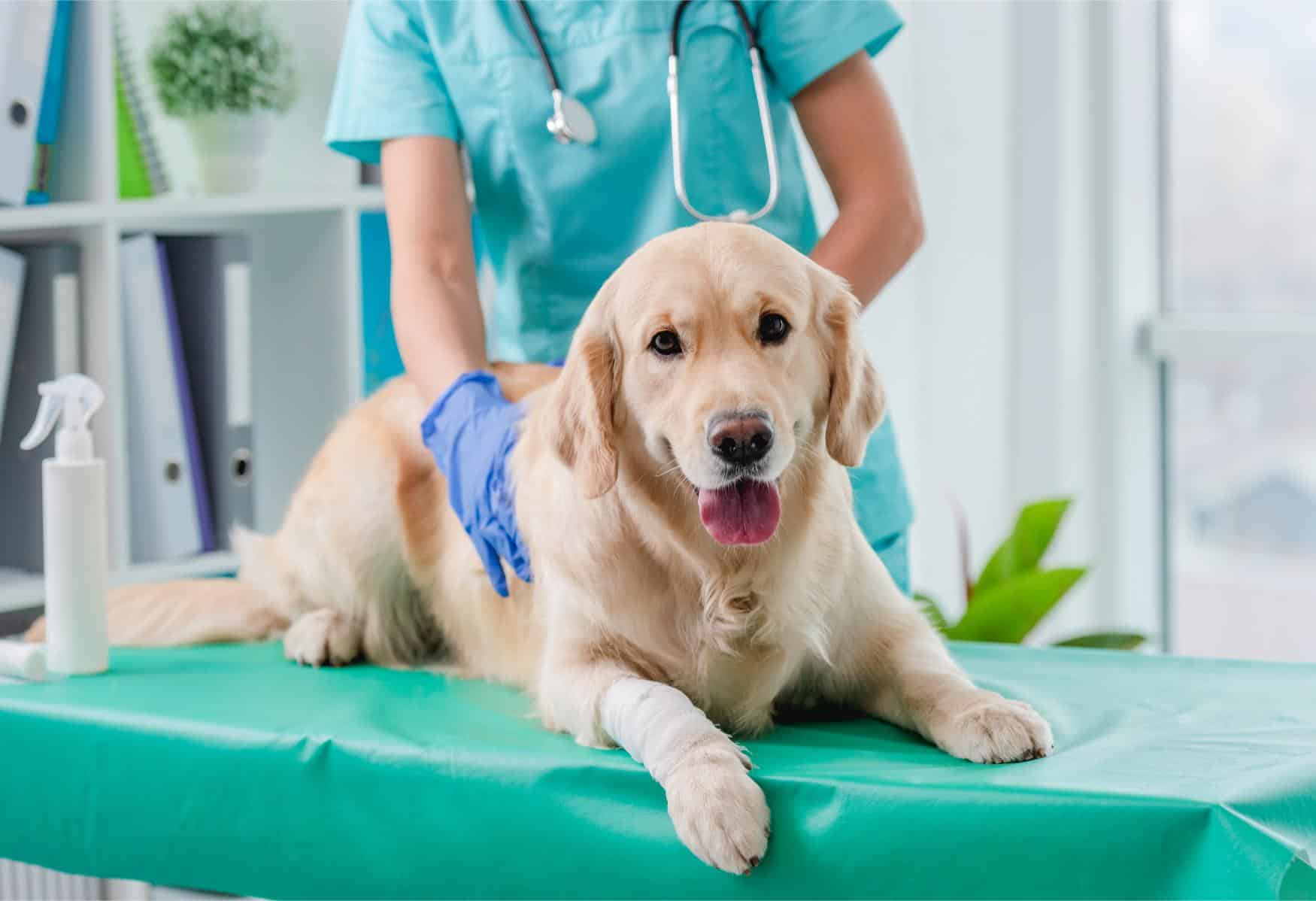ACL Rupture in Dogs

Pup personalities run the gamut from lazy lap dogs to high-performance athletes, but it might surprise you to know that no matter where your pet falls on the fitness spectrum, he or she can still be prone to injury—even an ACL rupture.
In dogs, this ligament is called the cranial cruciate ligament (or CCL), but this is the equivalent of the human ACL—the vital ligament responsible for stabilizing knee joints. An ACL rupture in dogs is one of the most common causes of lameness and knee swelling, and at Dupont Veterinary Clinic, we provide both diagnosis and surgical repair of ACL ruptures. Keep reading for more information about this common condition in dogs.
What Causes ACL Rupture in Dogs?
When humans injure their ACL, it’s usually during a high-intensity sport like football or soccer. ACL rupture in dogs is more commonly caused by a slow degeneration of the ligament due to a range of factors, including age, arthritis, obesity, poor physical condition, and even breed.
Signs of ACL Rupture in Dogs
Because this condition usually progresses slowly in dogs, symptoms can be subtle at first. Watch for these signs:
- Sticking one leg out to the side when sitting
- Trouble standing or jumping
- Difficulty getting into the car
- Reluctance to exercise
- Keeping weight off of one leg
- Swelling
- Limping
Diagnosing ACL Rupture in Dogs
If your dog exhibits any symptoms of ACL rupture, it’s important to contact your veterinarian right away. We make the diagnosis of ACL rupture with a thorough physical examination, which includes palpating the knee to check for the presence of pain, swelling, and instability; and digital X-rays of the knees and hips.
Treatment of ACL Rupture in Dogs
For optimal results, we recommend ACL surgery for all dogs with a ruptured ACL. Left untreated, most dogs will develop severe degenerative joint disease (arthritis) and meniscal tears, resulting in chronic pain and permanent lameness. And as the dog favors the affected leg and puts more weight on the “good” leg, the chance of developing a second ACL rupture increases.
ACL Surgery for Dogs
Smaller dogs that weigh less than 50 pounds typically respond well to a less aggressive, traditional type of surgical repair that involves the placement of a monofilament suture to help stabilize the knee (sometimes called extracapsular lateral suture stabilization).
Dogs over 50 pounds are better served with one of the more advanced procedures, TTA or TPLO. While more involved surgeries, TTA and TPLO are considered the “gold standard” for larger pets.
Helping Pets Heal After ACL Surgery for Dogs
Regardless of the type of ACL surgery that your pet undergoes, physical rehabilitation following surgery will help your dog get stronger faster. Between rehab appointments, however, keeping your dog calm and encouraging plenty of rest is critical, as is eliminating your dog’s need to jump or climb stairs.
Your Dog is in Good Hands
We want your dog to enjoy a long, active life. If you suspect that your pet has sustained an injury, please contact us at (260) 637-7676.
